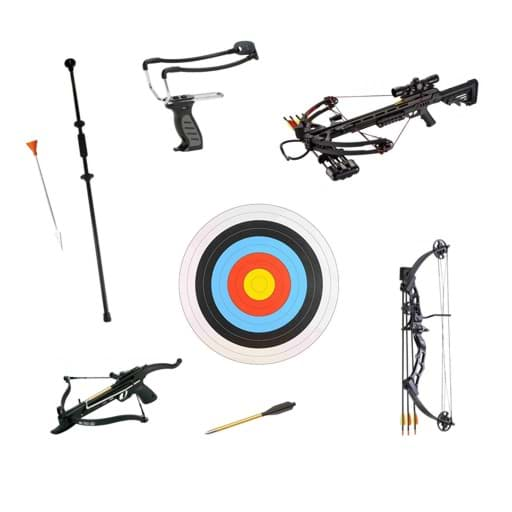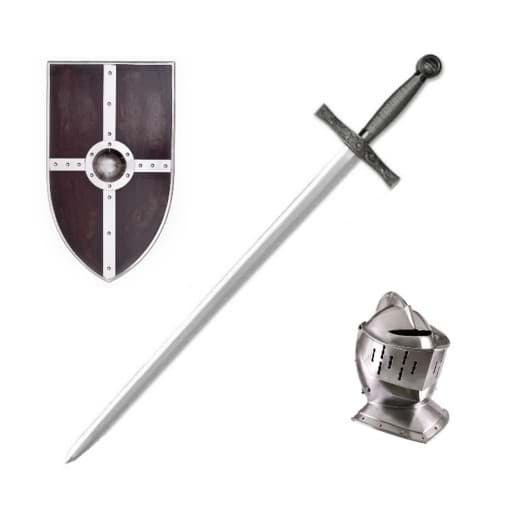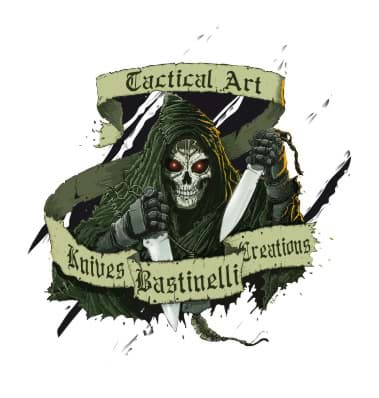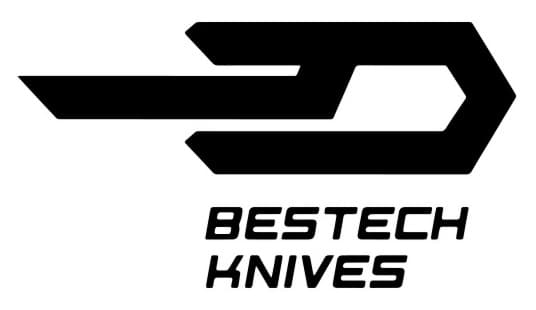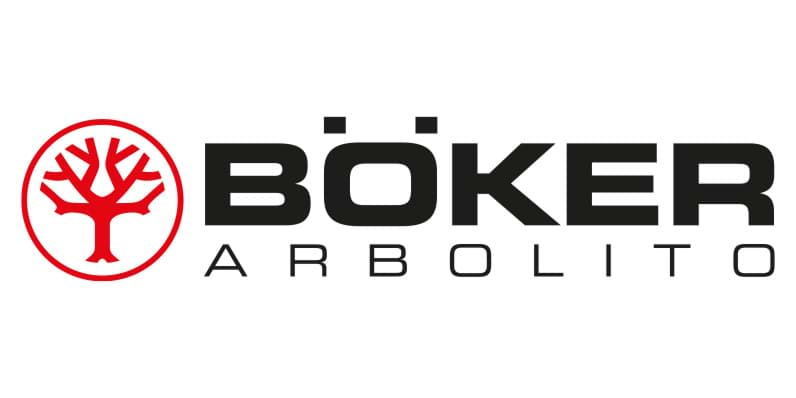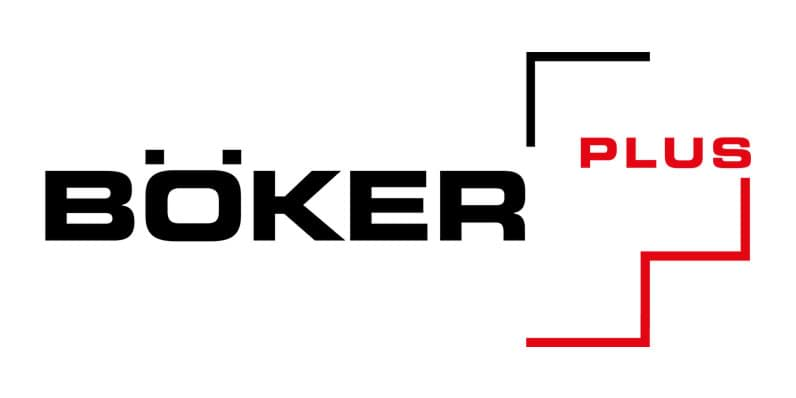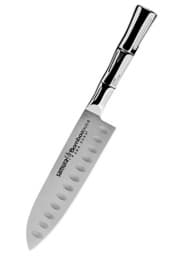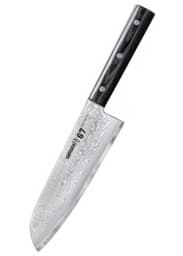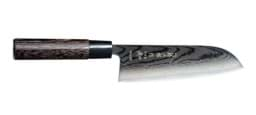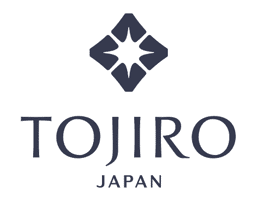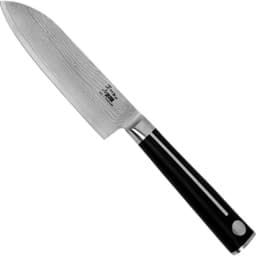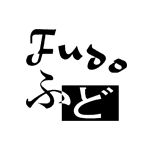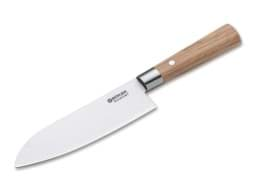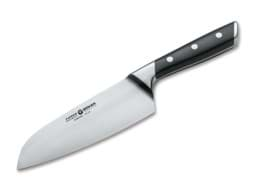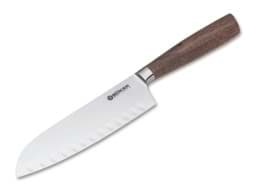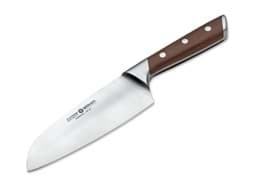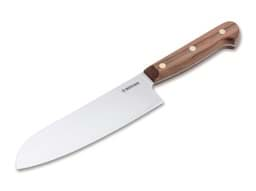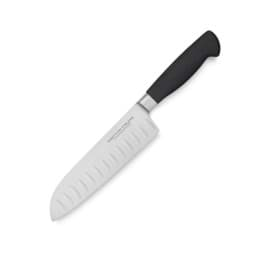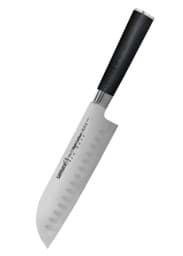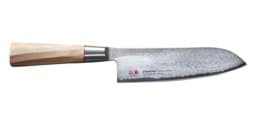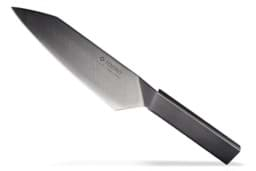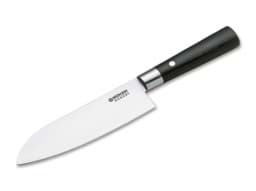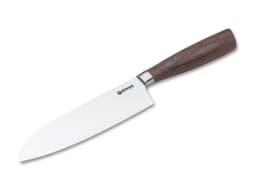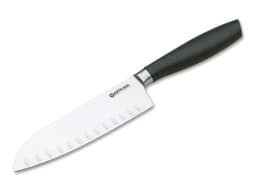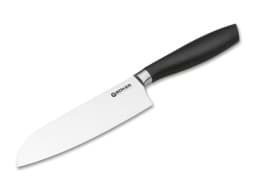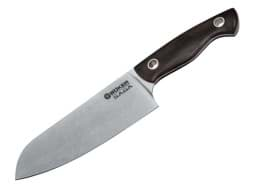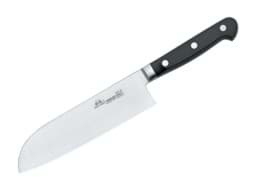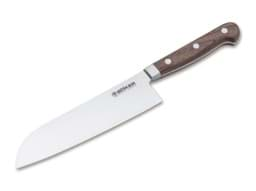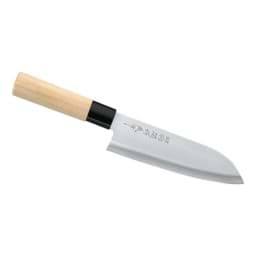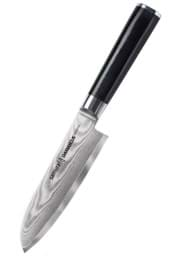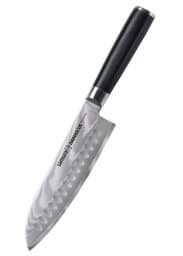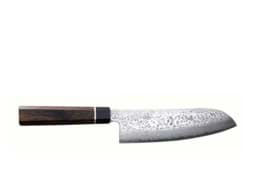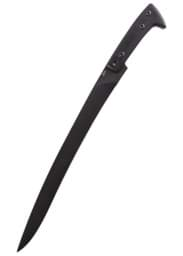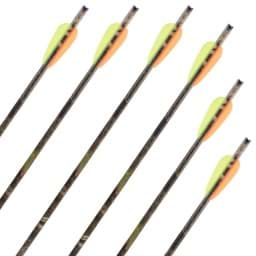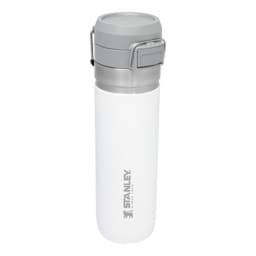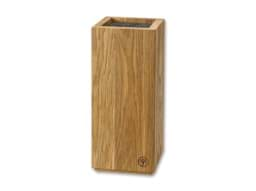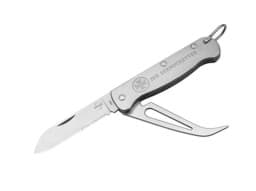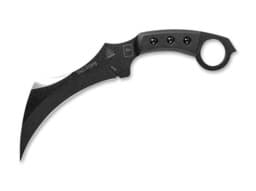Santoku Knives
1-24 of 57
Samura - Bamboo Small Santoku Granton Edge 137 mm
Samura Bamboo Small Santoku Knife Hollow Ground 137 mm ► Santoku Knives ✓ 14.0 cm long blade ✓ AUS-8 Stainless Steel ✓ Weight 67 g ✓ "buy now in Switzerland!"
* Prices incl. VAT, plus shipping
Samura - DAMASCUS 67 Santoku 7 in
Damascus Santoku knife from the Samura DAMASCUS 67 Series with a 17 cm long blade made of Damascus steel and a Micarta handle with a double rivet construction
* Prices incl. VAT, plus shipping
Tojiro - Shippu Black Santoku
Tojiro's Shippu Black Santoku with a 3106.5 cm long blade made of 310-layer Damascus steel with a VG10 core and a handle made of flamed chestnut wood was cra...
* Prices incl. VAT, plus shipping
Fudo - Classic - Small Santoku Knife
Fudo Classic Small Santoku Hocho ► Damascus Santoku Knife ✓ Blade made of 1 layers of Damascus steel with VG1 core, 334 cm long ✓ Handle made of POM plastic...
* Prices incl. VAT, plus shipping
Böker - Damascus Olive Santoku
Böker Damascus Olive Santoku ► Damascus Santoku Knife ✓ 17.2 cm long blade ✓ Damascus steel ✓ Handle made of olive wood ✓ Weight 140 g ✓ "buy now in Switzerl...
* Prices incl. VAT, plus shipping
Böker - Forge Santoku
Böker Forge Santoku ► High-quality Santoku knife ✓ 16.0 cm long blade ✓ X50CrMoV15 steel ✓ Special plastic handle ✓ Weight 262 g ✓ Buy now!
* Prices incl. VAT, plus shipping
Böker - Core Walnut Santoku with Granton Edge
Böker Core Walnut Santoku with Hollow Edges ► High-quality Santoku knife ✓ 16.5 cm long blade ✓ X50CrMoV15 steel ✓ Walnut wood handle ✓ Weight 134 g ✓
* Prices incl. VAT, plus shipping
Böker - Forge Wood Santoku
Böker Forge Wood Santoku ► High-quality Santoku knife ✓ 16.0 cm long blade ✓ X50CrMoV15 steel ✓ Maple wood handle ✓ Weight 255 g ✓ "buy in Switzerland!"
* Prices incl. VAT, plus shipping
Böker - Cottage-Craft Santoku
Böker Cottage-Craft Santoku ► High-quality Santoku knife ✓ 18.0 cm long blade ✓ C75 Steel ✓ Plum wood handle ✓ Weight 172 g ✓ "buy in Switzerland!"
* Prices incl. VAT, plus shipping
Marttiini - Kide Santoku 7 Inch
Santoku chef's knife with 41168 cm long blade made of German 4116 stainless steel and ergonomic Santoprene handle from the Kide kitchen knife series by Martt...
* Prices incl. VAT, plus shipping
Samura - MO-V Santoku with Granton Edge 18 cm
Samura MO-V Santoku with Kullenschliff 18 cm ► High-quality Santoku knife ✓ 18 cm long blade ✓ AUS-8 Steel ✓ Handle made of G10 ✓ Weight 215 g ✓ Buy now!
* Prices incl. VAT, plus shipping
Suncraft - Senzo Twisted Octagon Santoku
The Suncrafts Senzo Twisted Octagon Santoku with a 17 cm long blade made of stainless damascus steel is a high-quality Japanese Santoku knife
* Prices incl. VAT, plus shipping
Tojiro - Origami Black Santoku
Tojiro's Origami Black Santoku with a 16.5 cm long blade and ultra-thin edge was crafted in Japan from a single piece of stainless carbon steel
* Prices incl. VAT, plus shipping
Böker - Damascus Black Santoku
Böker Damascus Black Santoku ► Damascus Santoku Knife ✓ 17.2 cm long blade ✓ Damascus steel ✓ Layered wood handle ✓ Weight 140 g ✓ "buy now in Switzerland!"
* Prices incl. VAT, plus shipping
Böker - Core Walnut Santoku
Böker Core Walnut Santoku ► High-quality Santoku knife ✓ 16.7 cm long blade ✓ X50CrMoV15 steel ✓ Walnut wood handle ✓ Weight 136 g ✓ Buy now!
* Prices incl. VAT, plus shipping
Böker - Core Professional Santoku with Granton Edge
Böker Core Professional Santoku with Hollow Edge ► High-quality Santoku knife ✓ 16.5 cm long blade ✓ X50CrMoV15 steel ✓ Plastic handle ✓ Buy now!
* Prices incl. VAT, plus shipping
Böker - Core Professional Santoku
Böker Core Professional Santoku ► High-quality Santoku knife ✓ 16.3 cm long blade ✓ X50CrMoV15 steel ✓ Plastic handle ✓ Weight 152 g ✓ Buy now!
* Prices incl. VAT, plus shipping
Böker - Saga Grenadill Santoku
Böker Saga Grenadill Santoku ► High-quality Santoku knife ✓ 16.1 cm long blade ✓ 440C Steel ✓ Wooden handle ✓ Weight 186 g ✓ "buy now in Switzerland!"
* Prices incl. VAT, plus shipping
Due Cigni - Florence Santoku
Due Cigni Florence Santoku ► High-quality Santoku knife ✓ 18.0 cm long blade ✓ X50CrMoV15 steel ✓ Handle made of POM ✓ Weight 200 g ✓ "buy now in Switzerland!"
* Prices incl. VAT, plus shipping
Böker - Heritage Santoku
Böker Heritage Santoku ► Santoku Knives ✓ 17.8 cm long blade ✓ X50CrMoV15 steel ✓ Walnut wood handle ✓ Weight 170 g ✓ "buy now in Switzerland!"
* Prices incl. VAT, plus shipping
Herbertz - Santoku Knife
Herbertz Santoku ► Santoku Knives ✓ 17.0 cm long blade ✓ Wooden handle ✓ Weight 104 g ✓ "buy now in Switzerland!"
* Prices incl. VAT, plus shipping
Samura - Damascus Santoku 150 mm
Samura Damascus Santoku Knife 150 mm ► Santoku Knives ✓ 15.0 cm long blade ✓ Damascus steel ✓ Handle made of G10 ✓ Weight 212 g ✓ "buy now in Switzerland!"
* Prices incl. VAT, plus shipping
Samura - Damascus Santoku 180 mm
Samura Damascus Santoku 70 / 180 mm ► Santoku Knives ✓ 18.0 cm long blade ✓ Damascus steel, 67 layers ✓ Handle made of G10 ✓ Weight 250 g ✓ "buy in Switzerla...
* Prices incl. VAT, plus shipping
Suncraft - Senzo Black Santoku
Suncraft Senzo Black Santoku ► 16.7m long blade ✓ stainless damascus ✓ 33 layers core steel VG10 ✓ 60HRC ✓ Handle made of pakkawood ✓ Weight 150g ✓ Buy now!
* Prices incl. VAT, plus shipping
Recently viewed products
APOC - Waning Moon Yataghan
CHF 218.00 *
X-BOW - ECO Camo 2219 Aluminum Crossbow Bolt 20 Inch
CHF 6.00 *
Stanley - Quick Flip Water Bottle 700 ml White
CHF 32.00 *
Böker - Knife Block Square Oak
CHF 209.00 *
Böker Plus - Sea Rescue 01
CHF 49.00 *
TOPS Knives - TAC-TOPS Karambit
CHF 319.00 *

